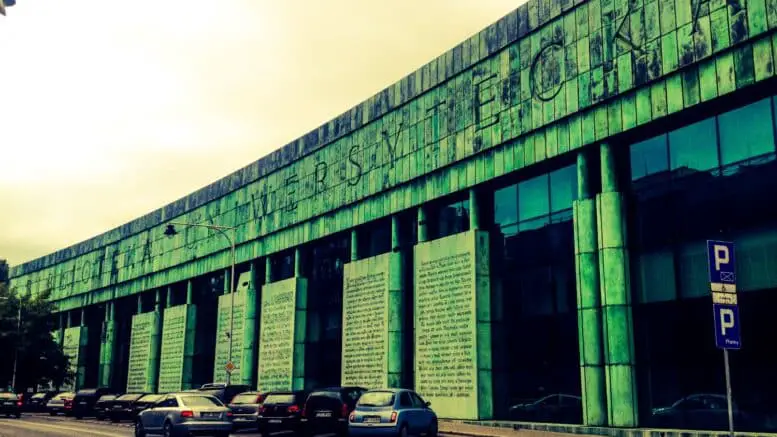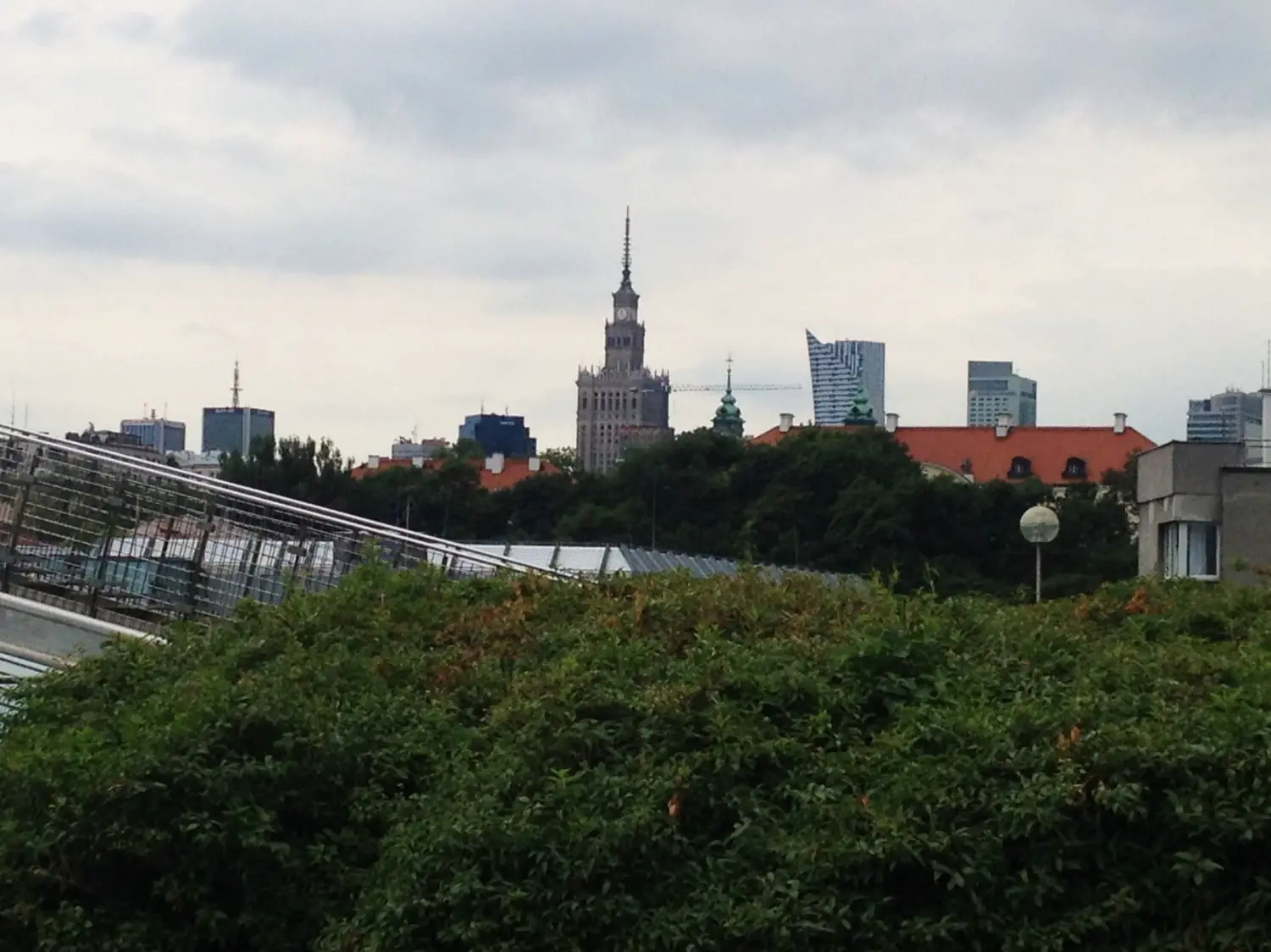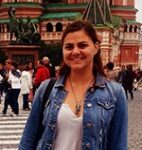Acquiring a library card for the University of Warsaw Library may be one of the best investments you can make while in Warsaw. For only 10 złoty, you may purchase a public access library card at the UW Library, a behemoth green and glass structure near the Vistula River and the Copernicus Science Center. It features cafes and stores at the bottom level before reaching the library entrance, and a public-access green roof with an amazing view at the top. The nickname is BUW (Biblioteka Uniwersytetu Warszawskiego) which is inscribed throughout the building. They have a multitude of computers you can use, free wifi, and a decent amount of English-language reading material aside. The library offers reading rooms, work stations galore, and even bean bag chairs for relaxed reading spaces.
How to get a card
You must be over 18 years old and present valid identification when you apply for a library card. The process doesn’t take long: you sign the terms agreement of the library, show your passport, get your picture taken, and hand over 10 złoty. Viola, you have a two-year library card for the University of Warsaw Library!
Checking out books
Unfortunately, only UW students and employees are allowed to check books out. However, there is an abundance of reading corners, work stations, and armchairs on the premise for you to use the materials.
How to print
You cannot print with your library card. Nor can you scan or copy with your library card. You must buy another card altogether and put money on that. Granted, not very efficient nor environmentally friendly, but it is what it is. To buy a pre-paid card, there is a machine on the wall next to the information desk (when you reach the top of the main stairs). There are instructions in English how to purchase the pre-paid card from the machine, and that same machine is used to add money. The pre-paid cards cost 3 PLN.
You cannot send documents to the printers from laptops. You must sign onto the desktop computers – there are many next to the printers. You send the document to the printer, and on the computer connected to the printer, you swipe your pre-paid card.
Black and white A4 costs 0,70 PLN per page, and color will set you back 3,5 PLN.
To print photographs from your own camera or elsewhere, you must first get permission from the Reference Desk on level 1. The Imaging Services office offers printing in monochromatic or color, sized A0-A4, and double-sided.
How to scan or copy
The self-service scanner is on level 1, and you need a pre-paid card to pay for the scans. Scans costs 0,10 PLN and can be saved on a USB drive.
Copy machines can be found next to the Reference Desk on level 1, in the Law/Political Science area on level 2, or in the Main Reading Room on level 2. One A4 copy costs 0,35 PLN, and A3 costs 0,75 PLN.
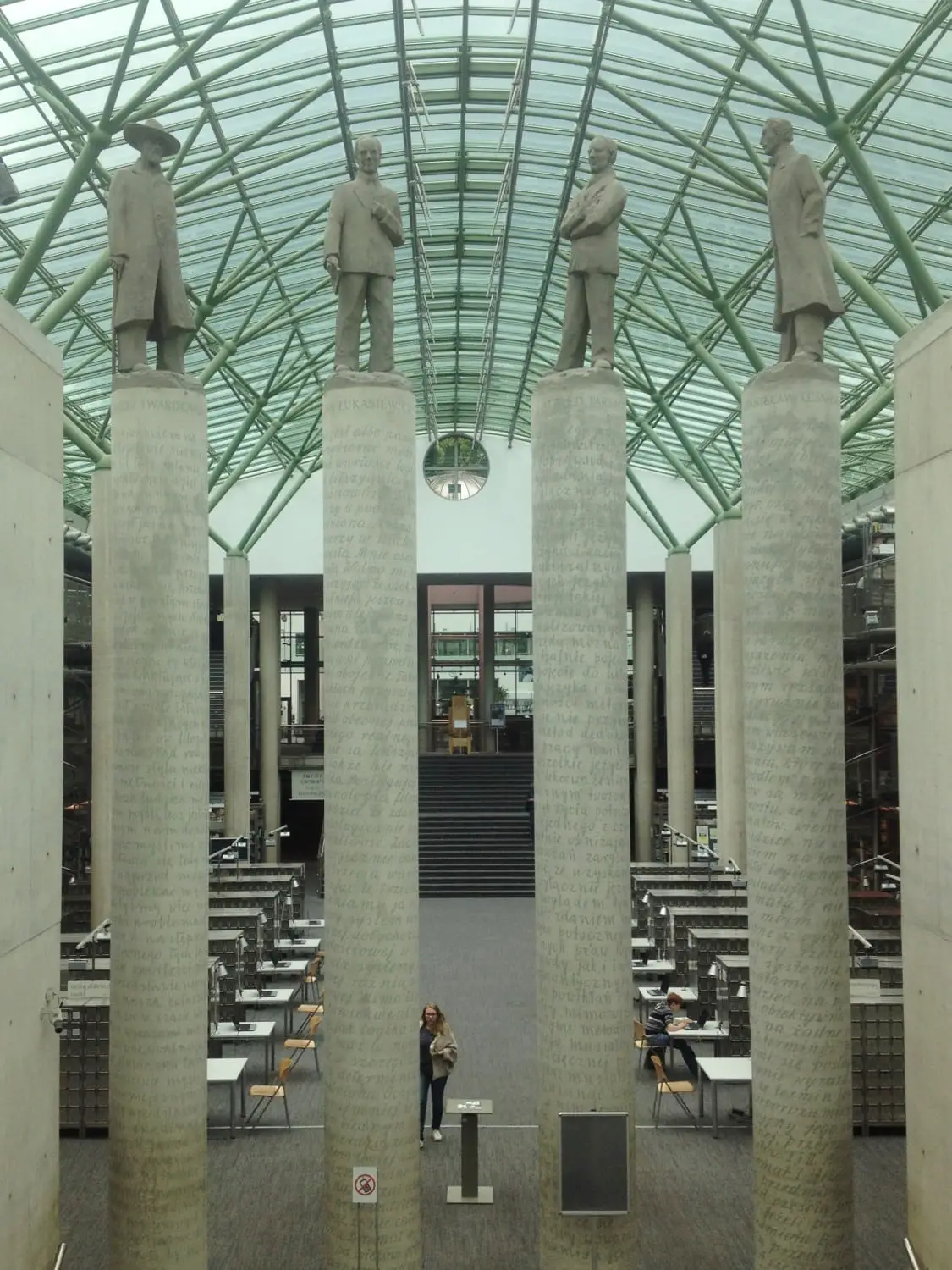
The statues of famous Polish philosophers Kazimierz Twardowski, Jan Łukasiewicz, Alfred Tarski, and Stanisław Leśniewski welcome the visitors and students to the library.
History of the library
The library was originally established as a part of the Royal University of Warsaw in 1817. It transitioned into an independent public library the following year, and housed a significant collection of more than 134,000 items in 1831. That year, however, the Russian Tsar Nicholas I moved a large portion of those holdings to St. Petersburg following the November Uprising. The library was re-instated as the State Library in 1834 until 1871 when it became the Tsar’s University Library.
When the Russians left Warsaw in August 1915, they relocated most of the collection to Rostov-on-Don. The library itself was opened in conjunction with the Polish University in Warsaw the same year. During the Interwar Years, the library’s collection expanded and received some of the 1915 collection back from Rostov-on-Don. By the beginning of World War II, the library boasted over one million items.
In 1940, the National Library, University libraries, and Krasinski Library were merged together to create the Staatsbibliothek Warchau. The University of Warsaw Library held foreign books during the time, but secretly supplied materials to the underground universities in Warsaw and Poznan. After the war, the main reading room was re-opened in 1945-1946 and the library underwent large acquisiton of new items while recovering the old. Although the library suffered from a shortage of public funds during the Soviet era, a new era began in 1990 with Prime Minister Mazowiecki’s decision for library expansion.
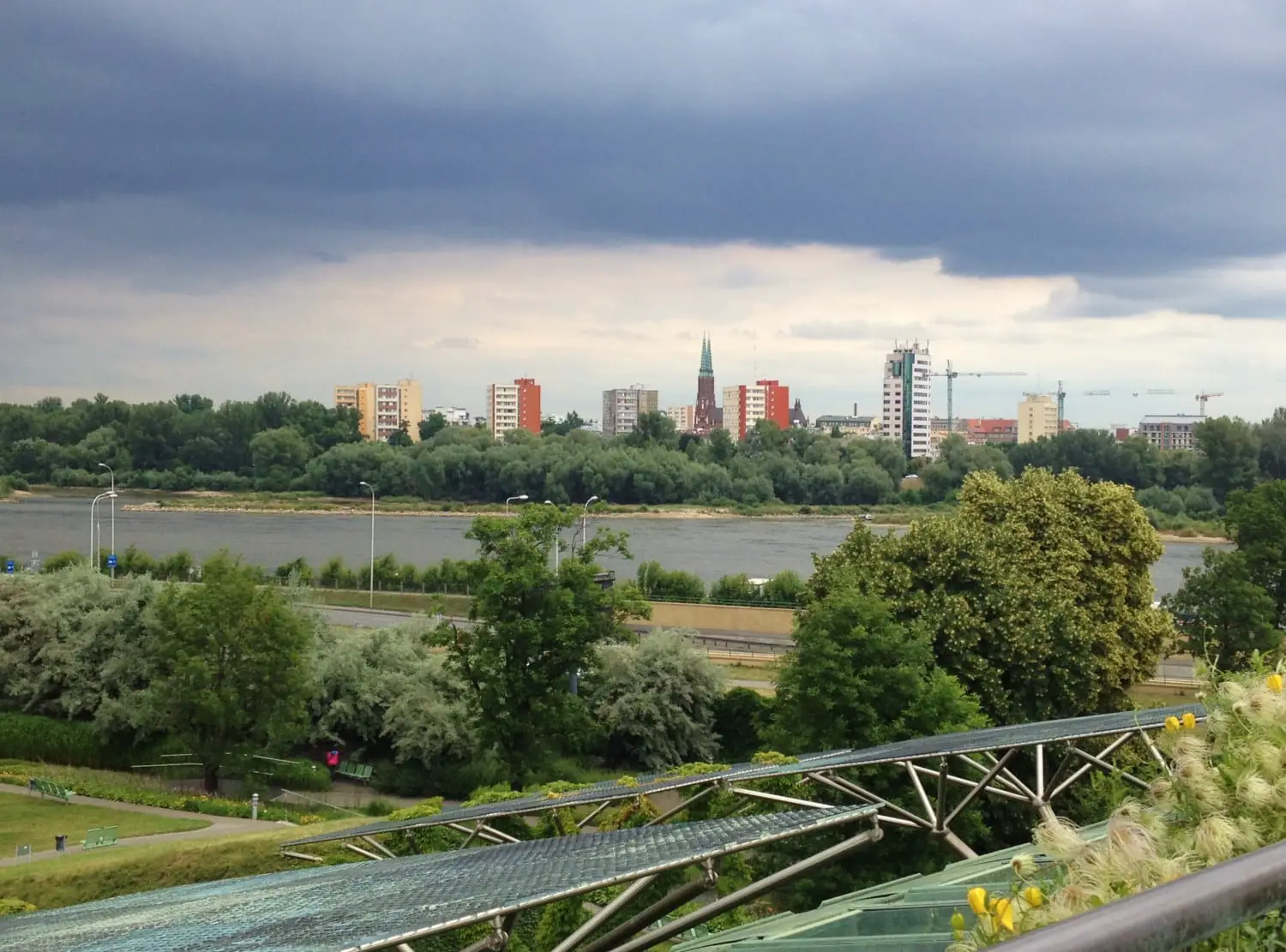
From the library’s green roof, one can see across the river to Praga and the solar panels surrounding the building
About the green roof
The UW Library garden was designed by Irena Bajerska and opened on June 12, 2002. It is among the largest roof gardens in Europe, totaling more than 10,000 m2. It is open to the public, and no alcoholic beverages are allowed. The lower garden connects to the upper (roof) garden through a myriad of paths and bridges. Through the glass roof and other windows on the bridges, one can look into the library itself. For a complete list of the greenery in the garden, please visit this site.
Garden hours:
8 am – 8 pm May 1st- September 30th
8 am – 6 pm April and October
8 am – 3 pm November 1st-March 31st
In the winter months, only the lower garden is accessible
Library hours:
9 am – 9 pm Monday – Friday
12 noon – 7 pm Saturday
3 pm – 8 pm Sunday
Sources:
University of Warsaw Library website
Uncube Magazine website


